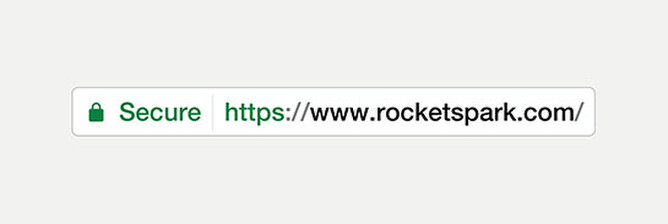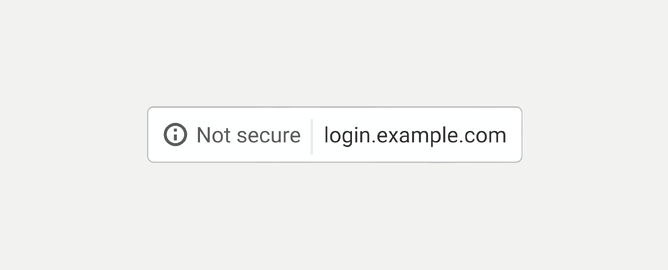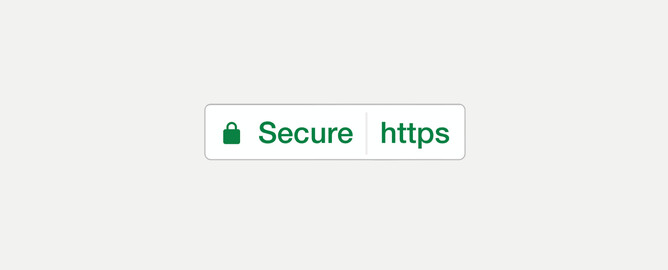Enabling SSL: How not to scare away security-conscious customers
The oldest lock-and-key device ever discovered is over 4,000 years old. It seems we’ve always been worried about security. But, more recently, a new kind of security threat has broken-and-entered into public consciousness: internet security. In the last couple of years alone, we’ve witnessed the notorious pro-infidelity dating site Ashley Madison’s data breach, the successful infiltration of Facebook big kahuna Mark Zuckerberg’s own Facebook account, and Russian hackers may even be the reason why Donald Trump is now leader of the free world. Keeping your stuff safe has always been hard; keeping it safe online is even harder.
For that reason, Google is cracking down on unsecure websites, which presents Rocketspark clients with a challenge. But don’t worry—we’ve got a solution.
The challenge: non-secure website warning
The latest Google Chrome release (Chrome 56) has a new feature: pages collecting either passwords or credit card details that are non-secure will be flagged with a warning in the URL bar like this:
See that “Not secure” label? That warns users that, if they proceed, their important information won’t be protected, making them more vulnerable to a cyber-attack. This is a good thing. It keeps our data safe. But it also means that you might scare your users away if you don’t beef up your website’s security.
Admittedly, this development only applies to a specific web browser: Google Chrome but other browsers like Firefox have similar features, and the remaining browsers are likely to follow suit. Increased security in Chrome alone should be reason enough to switch to SSL. 44.5% of all web users choose Chrome—by far the world’s most popular browser—so your non-secure website could drive away almost half of your would-be customers!
The solution: enabling SSL certificates
If your web page has a Secure Sockets Layer (SSL) certificate, then your page is secure and thus won’t be marked as being non-secure. Don’t let the geek-speak scare you off—simply put, SSL is just a secure method of communicating over the internet (HTTPS uses this Secure method).
Enabling SSL will mean that when somebody visits your site, they’re greeted with this reassuring sign:
Users can proceed knowing that their information is safe and secure. Here’s the even better news: Rocketspark allows you to enable SSL for your web pages. How much does it cost? Nothing. Yep, that’s not just cheap SSL; that’s free SSL. And, best of all, it’s really easy. Click here to read our step-by-step instructions.
And if you need an extra little nudge towards activating SSL on your website, consider this: SSL boosts your search engine rankings. True, the ranking improvement will be minor, affecting fewer than 1% of search queries, but it’s a signal of where things are headed. SEO experts are already adamant that a non-secure site will hurt your rankings.
Conclusion: towards a more secure future
This security measure is just the first step in Google’s long-term plan to flag all non-secure HTTP pages in Chrome, not just password-/credit card-collecting pages. Plus, since Google is a bit of a pioneer, it is just a matter of time before this becomes a standard feature across all browsers. Things are only going to get harder for non-secure websites. You might as well fix this now—before it starts costing you customers.


